#Eocoracias
Text
Fossil Novembirb: Day 11 - A New Dawn

Messel lake is a legendary fossil site from the middle Eocene of Germany, about 40 million years ago. It preserves incredible fossils and a great diversity of life thanks to the lake's dark, volcanic secrets. This was also famously the setting of the first episode of the paleodocumentary series Walking With Beasts. While the episode isn't particularly accurate and actually takes place at the later part of the Paleogene greenhouse, one thing is certain. There were a lot of birds here.
Hassiavis: An insectivorous bird related to nightjars and owlet-nightjars. The fossil of this bird is so well preserved that even the pattern of the bird's wing feathers is visible.
Paraprefica: An early relative of those peculiar South American birds, the potoos. In all likelyhood, this early potoo was just as weird as modern ones.
Scaniacypselus: One of the first true swifts, and was just as incredibly adapter for a life on the wing as modern swifts and tree-swifts.
Messelirrisor: A tiny insectivorous bird that was related to hoopoes.
Selmes: This small omnivorous bird was related to modern mousebirds. And like them, it could wwist all four of its toes forwards.
Eocoracias: A relative of rollers and the dollarbird that ate insects. The coloration of this bird is fully known thanks to excellent fossil preservation.
Masillastega: The earliest known gannet known from a complete skull. This booby dove under the surface to catch fish, though it likely didn't plunge down like modern boobies.
Rhynchaeites: A widespread wader known from multiple fossil sites in Europe. It closely resembles and may have been related to modern ibises.
Messelornis: A relative of modern rails and the obscure finfoots, this was a very successful bird, with fossils found from Europe and North America.
Juncitarsus: A long legged and spear beaked bird that resembles a crane, but is actually related to grebes and flamingoes. It used it's sharp beak to spear fish.
Paleotis: A relatively large and flightless relative of the modern ostriches, standing around a metre tall.
#Fossil Novembirb#Novembirb#Dinovember#birblr#palaeoblr#Birds#Dinosaurs#Cenozoic Birds#Hassiavis#Paraprefica#Scaniacypselus#Messelirrisor#Selmes#Eocoracias#Masillastega#Rhynchaeites#Messelornis#Juncitarsus#Paleotis
60 notes
·
View notes
Text


Fossil Novembirb: Day 11
Dawn in Messel
1. Eocoracias brachyptera
2. Masillastega rectirostris
3. Juncitarsus merkeli
#paleoart#prehistory#fossil novembirb#messel pit#eocoracias#masillastega#juncitarsus#made with krita
9 notes
·
View notes
Text
Fossil Novembirb 11: A New Dawn

Palaeotis by @drawingwithdinosaurs
One of the absolutely best known ecosystems of the Eocene is found at the Messel Pit site of Germany. Deposited in a similar way (via multiple volcanic eruptions over periods of thousands of years) to the Fossil Lake of yesterday, but a few million years later, it shows the end of the early Eocene and the start of the emergence of modern mammalian groups. Lucky for us, it also shows the next stage of bird evolution! This was also the site featured in the first episode of Walking With Beasts, "A New Dawn", though the avifauna was not particularly well represented in that program.
Yes, obviously, Gastornis was in Messel, though as a large ground herbivore than a predator. But there were plenty more birds than that! Lithornis was also here, because it was just as ubiquitous; and there was also the mysterious Palaeoganth Palaeotis. Originally thought to be a relative of Ostriches, then not, and now possibly again, this bird has a strangely intermediate morphology between that of large flightless Palaeognaths and the Lithornithids of the early Paleogene; indicating it may be a transitional form. It would not have been able to fly, given its short wings and lack of keel, and probably fed on small animals in its environment.

Juncitarsus by @thewoodparable
In addition to the Megafowl Gastornis, there was also the early landfowl Paraortygoides, which did not have a crop like living landfowl and as such probably mainly fed on soft plant material. It also had shorter legs than other landfowl relatives at the time, indicating it may have been more similar to living pheasants than fowl that had been around previously.
Even though the Flamingo-Ducks like Presbyornis would stick around well into the Neogene, the first relatives of Flamingos show up at around this time. Juncitarsus was a wading bird, probably just as closely related to living grebes as their cousins flamingos, and had gastroliths in its stomach - allowing it to feed on hard animals it gathered in from the lake. It wasn't the only wader; Messelornis, a wader related to living rails and cranes; is the most common bird at the Messel Pit and was an important generalist in its ecosystem. In addition, the "Snipe-Rail" Rhynchaeites was actually an ibis relative, probing for food with its beak in the substrate around the lake.

Scaniacypselus by Paleo Miguel
Strisores are everywhere at Messel, with relatives of swifts and hummingbirds like Cypseloramphus, Parargornis, and Scaniacypselus, which weren't as adapted to specialized aerial niches as their living relatives. An insectivore with tiny feet, Protocypselomorphus, was also present; as were an early potoo in the form of Paraprefica and an early frogmouth in the form of Masillapodargus.
Strange flight specialists far away from their living ranges aren't the only bizarre features of the ecosystem - Masillastega, a piscivore and relative of living gannets and boobies, was also present at Messel. More relatives of seriemas, like Dynamopterus, Salmila, and Strigogyps showcase how not all Cariamiformes were predators - Strigogyps was an herbivore! The long-legged predator Masillaraptor was present there too, indicating falcons were successful as multiple types of raptors prior to today. The owl Palaeoglaux was a small predatory bird, with ribbon-like feathers in dense layers on its back.
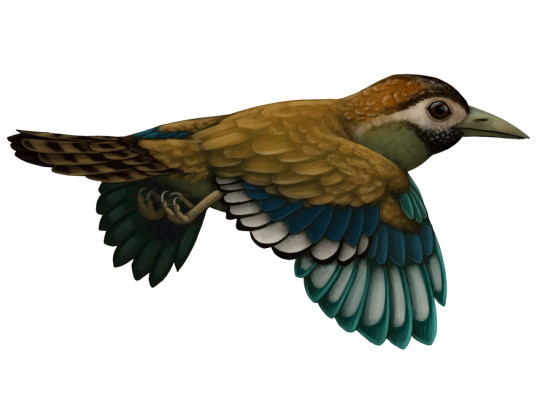
Eocoracias by @drawingwithdinosaurs
There were, of course, many tree dwelling birds in this lacustrine forest, including relatives from both sides of the "core landbirds" family tree. The ecosystem preserves a truly alarming number of mousebirds, including Chascacocolius with a conical beak, and Eoglaucidium with a strangely short tail. Eocoracias, another early roller like those found in Denmark, had iridescent feathers. Early hoopoes like Messelirrisor and early trogons like Masillatrogon show even more examples of more tropical birds showing up in higher latitude locations during this warm period. Messelastur was another possible Parrot/Passerine of prey; as was possibly Pumiliornis. Tons of pre-Passerines were here, too, including the zygodactly-footed Serudaptus, Psittacopes, and Primozygodactylus.
These dinosaurs were living at the end of a time of rapid evolution and diversification for most living things on Earth. However, the hot and humid times never last - as the planet begins to cool, drier ecosystems spread around the planet, and the global tropical forests fade into obscurity. It's time for these new groups of dinosaurs to adapt for new ecosystems...
Sources:
Mayr, 2022. Paleogene Fossil Birds, 2nd Edition. Springer Cham.
Mayr, 2017. Avian Evolution: The Fossil Record of Birds and its Paleobiological Significance (TOPA Topics in Paleobiology). Wiley Blackwell.
Smith, K. T. 2021. The Messel Pit: Window into a Greenhouse World. Geoconservation Research 4(2): 547-556.
118 notes
·
View notes
Photo
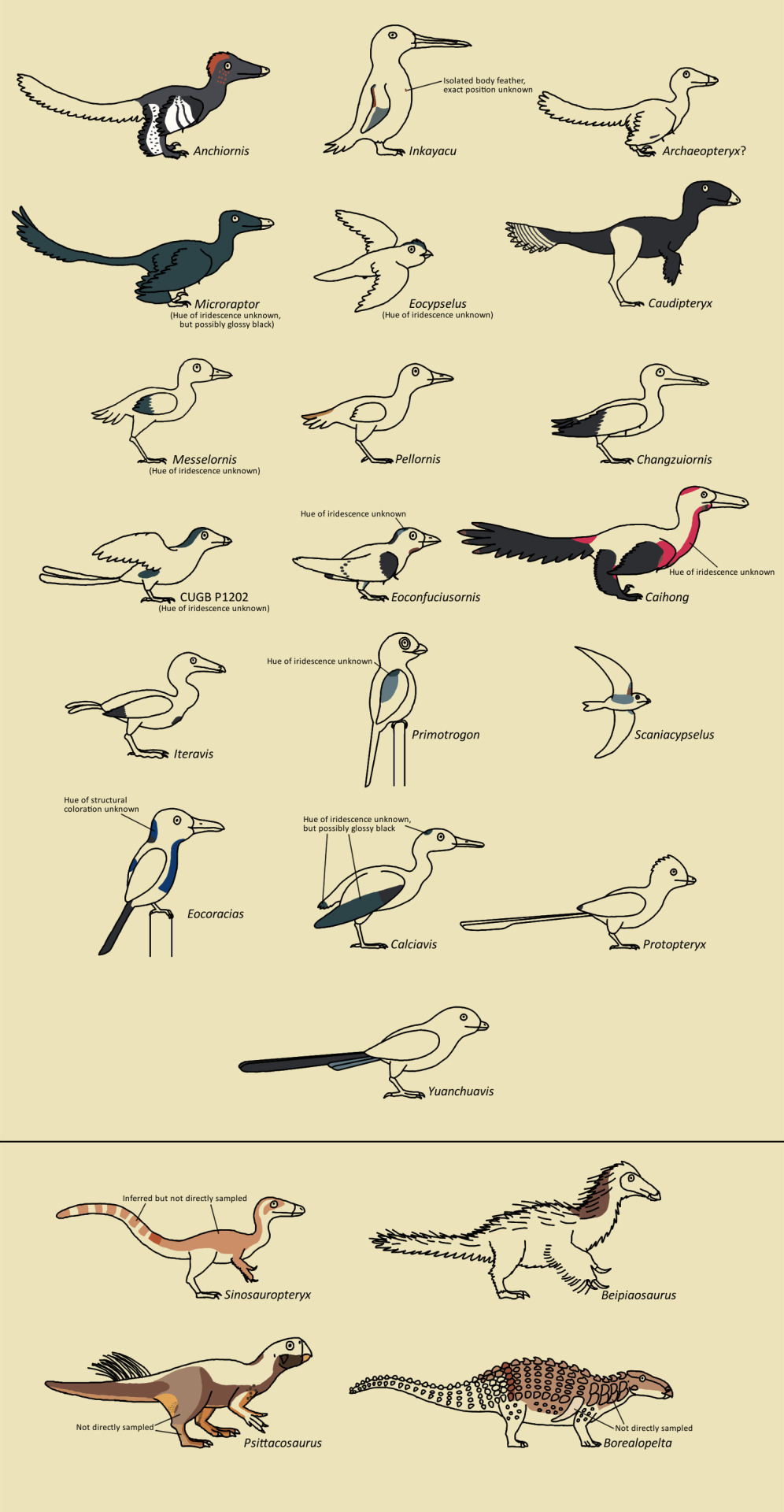
In the wake of 2021, added Yuanchuavis and modified Eoconfuciusornis for the paleocolor chart.
More detailed description
#Palaeoblr#Birblr#Dinosaurs#Birds#Feathered dinosaurs#Anchiornis#Inkayacu#Archaeopteryx#Microraptor#Eocypselus#Caudipteryx#Messelornis#Pellornis#Changzuiornis#Eoconfuciusornis#Caihong#Iteravis#Primotrogon#Scaniacypselus#Eocoracias#Calciavis#Protopteryx#Yuanchuavis#Sinosauropteryx#Beipiaosaurus#Psittacosaurus#Borealopelta
668 notes
·
View notes
Text
I Know Dino Podcast Show Notes: Euoplocephalus (Episode 242)
I Know Dino Podcast Episode 242: Notatesseraeraptor was described with one of the best Triassic #dinosaur skulls ever found in Europe
Episode 242 is all about Euoplocephalus, an ankylosaur from Dinosaur Provinical Park in Canada.
Big thanks to all our patrons! Your support means so much to us and keeps us going! If you’re a dinosaur enthusiast, join our growing community on Patreon at https://www.patreon.com/iknowdino.
You can listen to our free podcast, with all our episodes, on Apple Podcasts at: https://itunes.apple.c…
View On WordPress
#Adventure#Amy Atwater#animatronic#ankylosaur#ankylosaurid#ankylosaurus#Antarctic sea#bird#blue feathers#Carnivore#Chicxulub#Cretaceous#dinosaur#dinosaur of the day#Dinosaur Provinical Park#dinosaurs#Doraemon the Movie#Eocoracias#Euoplocephalus#extinct#extinction#frickensis#giganteus#Handbuilt#horse track#i know dino#inflatable#Jurassic#Mary Anning#melanosomes
1 note
·
View note
Link
A tree-dwelling bird that lived 48 million years ago probably had blue plumage, researchers say. Scientists inspecting a fossil of Eocoracias brachyptera say they have, for the first time, identified the remnants of the color in a fossil.
The researchers examined 72 feather samples from modern birds of many different colors, and 12 samples of organic material carefully collected from the fossilized plumage of E. brachyptera. Then, the team analyzed the shape and size of a type of pigment-containing cellular structure called a melanosome found within the feathers. Melanosome shapes have been linked to particular hues in feathers and fur, helping paint a picture of ancient animals. Sausage-shaped melanosomes are thought to contain black pigment, for instance, and rounder meatball-shaped pods contain reddish-brown pigment (SN: 6/22/19, p. 14).
Blue is one of the trickier colors to achieve, though. Blue, green and iridescent feathers, like a hummingbird’s, are called structural colors because producing those colors requires a particular setup within the barbs of the feather. That setup includes a spongy, air pocket–filled layer of keratin overlying a layer of black pigment–containing melanosomes.

BLUE BIRD The ancient bird Eocoracias brachyptera (shown in this artist's illustration) is related to many modern birds with blue feathers, such as kingfishers and kookaburras. CREDIT: MARTA ZAHER
For a blue-colored bird, “the top layer is structured in such a way that it refracts light in blue wavelength,” says Frane Babarović, an evolutionary biologist at the University of Sheffield in England. “The melanosomes underneath absorb the rest” of the light.
Keratin isn’t generally well-preserved in fossils, but melanosomes often are. So Babarović and his colleagues analyzed whether they could distinguish the shapes of melanosomes in blue-colored feathers from those of other colors.
Melanosomes of the blue-colored modern birds, as well as of E. brachyptera, did indeed have a unique shape, the researchers report June 26 in Journal of the Royal Society Interface. Those melanosomes were long (about 1,400 nanometers) and relatively wide (about 300 nanometers), larger and chubbier than melanosomes found in black feathers, and unlike those linked to reddish-brown or iridescent colors.
But the microstructure’s shape was similar to pigment-bearing melanosomes linked to the color gray, the team found. That may mean that blue and gray are evolutionarily linked. The overlap does make it difficult to know whether an ancient bird was true blue or, as is more common in modern birds, gray. But once blue has evolved within a particular family group, the color tends to continue to show up in other family members. Many of E. brachyptera’s modern relatives, such as kingfishers and kookaburras, have blue feathers, making it much more likely that the ancient bird did, too.

Pigment containers In bird feathers, melanosomes involved in the production of different colors come in different shapes and sizes. Black, brown and gray colors are produced by pigments in the melanosomes alone. Structural colors, whether iridescent or blue or green, are produced in two steps: Light is refracted by an air pocket–filled layer of keratin within the barbs of a feather, and an underlying layer of melanosomes absorbs the rest of the scattered wavelengths of light. But there’s one area of overlap: The melanosomes for those noniridescent structural colors are similar in size and shape to the gray pigment melanosomes. CREDIT: F. BABAROVIĆ ET AL/JRSI 2019
“It’s something that hasn’t been explored as much,” says Klara Norden, an evolutionary biologist at Princeton University, who was not involved in the new study. “No one’s really looked at noniridescent structural colors before at a large scale, because we’ve never had this dataset before. It’s really exciting to have this study out there that shows the shape of these melanosomes.”
Matthew Shawkey, an evolutionary biologist at Ghent University in Belgium, notes that the difficulty in distinguishing between blue and gray, without knowledge of a fossil’s family tree, puts limits to how useful the finding can be for identifying other ancient birds’ colors.
Still, Shawkey says, “it’s a neat study, and an unexpected one.” Since the melanosomes underlying the blue-feather structures also contain black pigment, “I wouldn’t have expected them to look different” from the melanosomes involved in the production of black color, he says. “That was surprising.”
63 notes
·
View notes
Link
Researchers predict that the plumage of Eocoracias brachyptera, a bird species that lived some 48 million years ago, was blue—the first time that blue feathers have been reconstructed from the fossil record.
Described in a study published today in Journal of the Royal Society Interface, the feathers belong to an extinct bird, Eocoracias brachyptera, that was recovered from Germany’s Messel Pit. This wonderland of well-preserved fossils dates back to the Eocene period, which lasted from 56 to 33.9 million years ago.
Researchers could infer E. brachyptera’s blue color only because they could compare it with its modern relatives, the rollers. Tiny structures preserved in the fossilized feathers resemble those that give modern birds either blue or gray hues, depending on their arrangement. And as far as we know, blue feathers have been fairly uncommon through time: Of the 61 lineages of living birds, only 10 have species with E. brachyptera’s most probable coloration...
#bird#bird evolution#evolution#prehistoric#fossils#animal coloration#nature#science#illustration#science illustration#dinosaurs
46 notes
·
View notes
Text
For The First Time, Scientists Have Discovered The Color Blue in Historical Fossilised Feathers
http://tinyurl.com/y3t34wxz
For the primary time, scientists have discovered a blue-feathered hen within the fossil document, due to a brand new discovery that lets us inform which fossilised pigments are, actually, blue. After tens of millions of years of fossilisation, feathers are lengthy gone, however melanin pigment packages referred to as melanosomes might be preserved – up till now the issue has been telling blacks, browns, greys and blues aside, however specialists have now been in a position to spot the distinction. It might result in a complete new appreciation of what prehistoric birds appeared like, together with the Eocoracias brachyptera species that was the topic of this specific analysis. “We’ve got found that melanosomes in blue feathers have a definite vary in dimension from most of color classes and we are able to, due to this fact, constrain which fossils might have been blue initially,” says palaeontologist Frane Babarović from the College of Sheffield within the UK. Eocoracias brachyptera fossil pattern. (Sven Traenkner/Senckenberg Analysis Institute and Nature Museum) Key to the invention was having the ability to examine the E. brachyptera fossils with their modern-day equivalents, the roller birds. That evaluation helped the researchers work out whether or not they had been taking a look at fossils from blue or gray birds – each of which go away behind melanosomes for much longer (1,400 nanometres) than they’re huge (300 nanometres). So as to add to the complexity, sure feather colors – together with blue and inexperienced – do not simply come about via melanin alone, however develop into seen due to extra cell constructions and lightweight refraction. These are generally known as structural colours and might typically be iridescent, too (consider the tail feathers of a peacock, for instance). By assessing the predominance of blue and gray within the household timber of dwelling birds, and finding out the melanosomes within the E. brachyptera fossils, the researchers concluded that there was a 99 p.c likelihood the prehistoric hen had a non-iridescent structural color, and solely a 19 p.c likelihood its feathers had been gray. “The overlap with gray color might counsel some widespread mechanism in how melanosomes are concerned in making gray colouration and the way these structural blue colors are shaped,” says Babarović. “Based mostly on these leads to our publication we now have additionally hypothesised potential evolutionary transition between blue and gray color.” These attention-grabbing findings might develop into one more useful resource for researchers to make use of when finding out fossils sooner or later. The workforce means that future research may also concentrate on the variations and similarities between gray and blue colouring in feather growth, with gray considered way more widespread. E. brachyptera is a vibrant, 48-million-year-old exception. “We additionally want to grasp how gray color is made,” says Babarović. “That is made in a really completely different method in birds than it’s in mammals.” “We imagine it’s associated to how the melanosome form may end up in a form of self-assembling course of within the feather and the floor pressure of the melanosomes pull them into sure configurations inside a feather because it varieties.” The analysis has been revealed within the Journal of the Royal Society Interface. Source link
0 notes
Photo

Updated my dinosaur paleocolor lineup with a few new entries from 2020: the lithornithid Calciavis (glossy black plumage) and the enantiornithean Protopteryx (black wingtips).
More detailed description
#Palaeoblr#Birblr#Dinosaurs#Birds#Feathered dinosaurs#Anchiornis#Inkayacu#Archaeopteryx#Microraptor#Eocypselus#Caudipteryx#Messelornis#Pellornis#Changzuiornis#Eoconfuciusornis#Caihong#Iteravis#Primotrogon#Scaniacypselus#Eocoracias#Calciavis#Protopteryx#Sinosauropteryx#Beipiaosaurus#Psittacosaurus#Borealopelta
79 notes
·
View notes
Photo

The latest in dinosaur paleocolor! 2019 gave us the colors of Eocoracias, and Pellornis gets retroactively added after a previously unnamed specimen was assigned to it.
More detailed description
#Dinosaurs#Birds#Palaeoblr#Birblr#Feathered dinosaurs#Anchiornis#Inkayacu#Archaeopteryx#Microraptor#Eocypselus#Caudipteryx#Messelornis#Pellornis#Changzuiornis#Eoconfuciusornis#Caihong#Iteravis#Primotrogon#Scaniacypselus#Eocoracias#Sinosauropteryx#Beipiaosaurus#Psittacosaurus#Borealopelta
46 notes
·
View notes
Text
Eocoracias brachyptera

By Scott Reid
Etymology: Dawn Near Crow
First Described By: Mayr & Mourer-Chauvire, 2000
Classification: Dinosauromorpha, Dinosauriformes, Dracohors, Dinosauria, Saurischia, Eusaurischia, Theropoda, Neotheropoda, Averostra, Tetanurae, Orionides, Avetheropoda, Coelurosauria, Tyrannoraptora, Maniraptoromorpha, Maniraptoriformes, Maniraptora, Pennaraptora, Paraves, Eumaniraptora, Averaptora, Avialae, Euavialae, Avebrevicauda, Pygostaylia, Ornithothoraces, Euornithes, Ornithuromorpha, Ornithurae, Neornithes, Neognathae, Neoaves, Inopinaves, Telluraves, Afroaves, Coraciimorphae, Cavitaves, Eucavitaves, Picocoraciae, Picodynastornithes, Coraciiformes, Eocoraciidae
Status: Extinct
Time and Place: 48 million years ago, in the Ypresian age of the Eocene of the Paleogene


Eocoracias was found in the Messel Pit formation of Darmstadt-Dieburg, Germany

Physical Description: Eocoracias was an early, transitional relative of modern rollers - a group of predatory, tree-dwelling birds that often feature bright, distinctive colors and patterns in their feathers. Eocoracias itself resembled rollers and their closest relatives alike, showcasing how this group of birds evolved (rollers being closely related to animals such as kingfishers). Overall, it looked a lot like modern rollers - it had a large head compared to the rest of its body, a relatively rectangular front of the head, though its eyes were not developed quite the same as modern roller eyes. In addition, its skull wasn’t quite as long and thin as modern rollers, though it did have as robust a beak as its living relatives. It had smaller toe bones than other rollers, though it is unlikely that this would have translated to it being less arboreal than its modern relatives. This is corroborated by the fact that its legs were somewhat short, though still similar to living rollers. It also had shorter wings than living members of the group, as well as long tail feathers, similar to modern Ground Rollers. In overall size, it was about the same size as a modern jay - around 35 centimeters in length, so a little bigger than most modern rollers.
Diet: Unlike its modern relatives, Eocoracias was not exclusively a meat-eater; instead, seeds have been found in its stomach in addition to animal material, indicating that Eocoracias was more of a generalized feeder. As an omnivore, it would have fed upon seeds, insects, fruit, and maybe even small vertebrates.
Behavior: Though Eocoracias was probably more closely related to modern Rollers, its overall body shape actually resembled Ground Rollers more closely. As such, it might have had a more similar lifestyle to Ground Rollers than to Rollers. Its short, triangular wings would have been useful in more short bursts of flight and agile maneuvering; its sturdier legs meant that, though it was still arboreal, it probably spent more time on the ground than modern rollers. In addition, it may have even nested in holes on the ground, rather than holes in trees like modern Rollers.
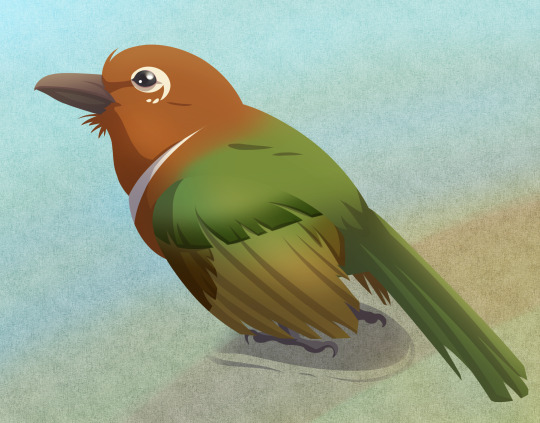
By José Carlos Cortés
Ecosystem: The Messel Pit was an extremely diverse and important ecosystem from the middle of the Eocene, showcasing how life began to transition into modern forms. Precursors of modern mammals and birds are common in the fossils from the Messel Pit, as well as other groups of animals such as insects, fish, and reptiles; in addition, plants showcase the unique climate and environment of the planet at this time. This environment was during the Global Rainforest period of the first half of the Eocene, in which the world was warm and wet, and covered with rainforest environments. The Messel Pit environment was no different; the area that the fossils represent was a large lake, surrounded by an extensive forest ecosystem. Volcanic gases were also common within the lake, which would have overwhelmed the animals living around it and caused mass deaths, allowing their bodies to fall into the lake and leading to their exceptional preservation.
Though it’s impossible to list all the animals that lived alongside Eocoracias, some notable dinosaurs that also lived in the Messel Pit along with Eocoracias include other Coraciiformes like Messelirrisor and Primobucco. The early relative of songbirds, Primozygodactylus, was a common feature in the area. The parrot of prey Messelastur was also present, as was the early seriema-like Strigogyps and the tiny owl Palaeoglaux. Early primates, rodents, bats, horses, and Leptictidium also lived in the area. Though it wasn’t found with it, Gastornis also probably would have frequented the environment of Eocoracias, though since Gastornis fed upon fruit, it wouldn’t have eaten Eocoracias. Instead, Messelastur and Strigogyps might have been main the predators of Eocoracias.
Interestingly enough, though this was an intensely forested environment, none of the tree-dwelling birds got as large as modern crows; this was probably due to the density of the vegetation.
Other: Eocoracias is known from multiple individuals, indicating it was fairly common within the Messel ecosystem.
~ By Meig Dickson
Sources under the cut
Mayr, G., C. Mourer-Chauviré. 2000. Rollers (Aves: Coraciiformes s.s.) from the Middle Eocene of Messel (germany) and Upper Eocene of the Quercy (France). Journal of Vertebrate Paleontology 20 (3): 533 - 546.
Mayr, G. 2009. Paleogene Fossil Birds. Springer-Verlag Berlin Heidelberg.
Mayr, G. 2016. The early Eocene birds of the Messel fossil site: a 48 million-year-old bird community adds a temporal perspective to the evolution of tropical avifaunas. Biological Reviews 92 (2): 1174 - 1188.
Mezger, J. E., M. Felder, F.-J. Harms. 2013. Crystalline rocks in the maar deposits of Messel: key to understanding the geometries of the Messel Fault Zone and didatreme and the post-eruptional development of the basin fill. Journal of the German Geosciences Society 164 (4): 639 - 662.
#eocoracias#dinosaur#bird#roller#omnivore#paleogene#eurasia#palaeoblr#birblr#factfile#afroavian#coraciiform#eocoracias brachyptera#birds#dinosaurs#paleontology#prehistory#prehistoric life#biology#a dinosaur a day#a-dinosaur-a-day#dinosaur of the day#dinosaur-of-the-day#science#nature
206 notes
·
View notes
Photo

A new study looked at the coloration of the Eocene roller relative Eocoracias, which means I can update a drawing of mine.
This is a very interesting study, because it is the first study to find structural coloration other than iridescence in a fossil dinosaur! Structural coloration is produced not by directly using pigments of a certain color, but by the interaction between light, pigments, and the structure of the color-bearing object (be it feathers, scales, or skin) itself. This is the main way in which animals make the color blue.
Unfortunately, the authors also found that it’s essentially impossible to distinguish cell bodies containing pigments that correspond to non-iridescent structural color from those that contain pigments for gray coloration by their shape alone, meaning that in most cases we can’t confidently identify non-iridescent structural color from fossils. However, Eocoracias is closely related to modern birds (rollers) that are much more likely to have non-iridescent structural color than gray feathers, suggesting that it did so as well. Furthermore, modern rollers tend to use their structural coloration to produce blue hues, which makes blue the most likely coloration across most of the plumage on Eocoracias.
21 notes
·
View notes
Photo
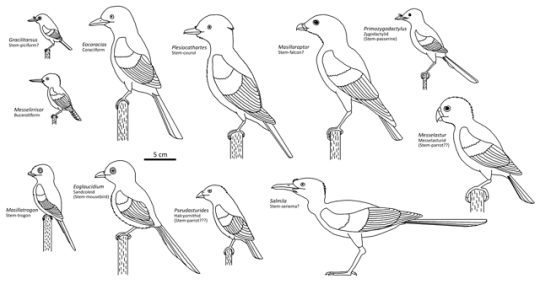
After forests recovered from their devastation by the Cretaceous mass extinction 66 million years ago, the few surviving dinosaurs quickly radiated into vacant arboreal niches. Among these new tree-dwelling birds, the most diverse were members of the clade Telluraves, a group that would give rise to hawks, owls, hornbills, kingfishers, woodpeckers, falcons, parrots, songbirds, and many more.
Here are a few 47-million-year-old telluravians whose fossils were found in the Messel Shale of Germany.
#Birds#Dinosaurs#Palaeoblr#Telluravians#Messelirissor#Gracilitarsus#Eocoracias#Masillatrogon#Eoglaucidium#Pseudasturides#Plesiocathartes#Masillaraptor#Salmila#Messelastur#Primozygodactylus
19 notes
·
View notes
Photo

Being me, I naturally decided to modify that 50 characters meme into a “50 interesting dinosaurs” meme. Hats off to you if you can identify more than half from these tiny pixelated images. (Hint: 14 of them are Cenozoic dinosaurs.) Blank version here for anyone else who wants to fill it out.
(Answers below the break.)
Buriolestes
Chilesaurus
Hesperornis
Iteravis
Prenocephale
Kelenken
Kosmoceratops
Aptornis
Concavenator
Limnofregata
Halszkaraptor
Cruralispennia
Falcarius
Microraptor
Haplocheirus
Similicaudipteryx
Foro
Conflicto
Sapeornis
Protodontopteryx
Albertonykus
Limusaurus
Kulindadromeus
Yi
Celericolius
Yutyrannus
Balaur
Xenicibis
Mei
Eofringillirostrum
Anchiornis
Bannykus
Raphus
Borealopelta
Miragaia
Archaeopteryx
Oryctodromeus
Caihong
Eocoracias
Parasaurolophus
Gigantoraptor
Fluvioviridavis
Inkayacu
Mengciusornis
Deinocheirus
Sinocalliopteryx
Eocypselus
Nigersaurus
Shanweiniao
Tianyulong
7 notes
·
View notes
Text
Palaeoglaux
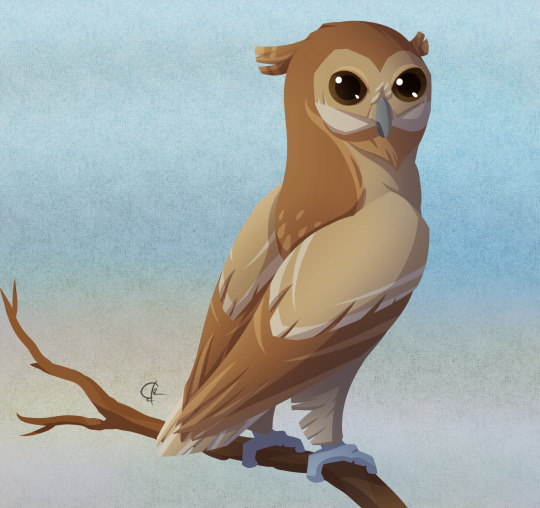
By José Carlos Cortés
Etymology: Ancient Owl
First Described By: Mourer-Chauviré, 1987
Classification: Dinosauromorpha, Dinosauriformes, Dracohors, Dinosauria, Saurischia, Eusaurischia, Theropoda, Neotheropoda, Averostra, Tetanurae, Orionides, Avetheropoda, Coelurosauria, Tyrannoraptora, Maniraptoromorpha, Maniraptoriformes, Maniraptora, Pennaraptora, Paraves, Eumaniraptora, Averaptora, Avialae, Euavialae, Avebrevicauda, Pygostaylia, Ornithothoraces, Euornithes, Ornithuromorpha, Ornithurae, Neornithes, Neognathae, Neoaves, Inopinaves, Telluraves, Afroaves, Strigiformes
Referred Species: P. perrierensis, P. artophoron
Status: Extinct
Time and Place: Palaeoglaux lived from 48 to 37 million years ago, from the Ypresian age to the Priabonian age of the Eocene in the Paleogene

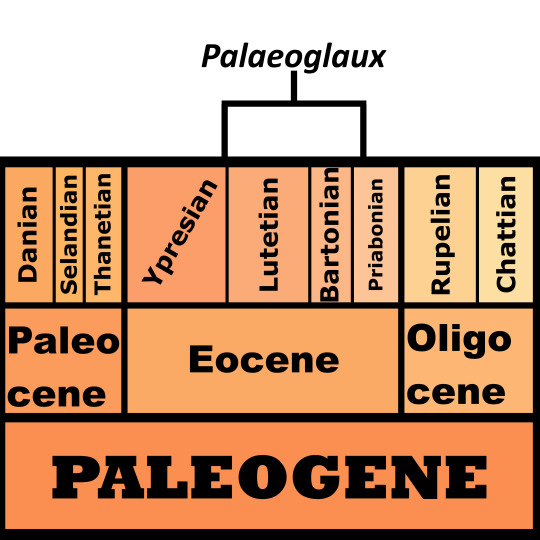
Palaeoglaux is known from the Messel Pit of Darmstadt-Dieburg, Germany; as well as the later Quercy Fissure Formation of Occitanie, France

Physical Description: Palaeoglaux was a very early form of owl, and one of the most complete early owls known - which means we know quite a bit about it! It is known from multiple individuals, including full skeletons on slabs; though, at this time, its skull is not known, so it is uncertain if it looked quite as weird as living owls in terms of facial structure. Like living owls, it has extra air holes in its shoulders, showing that this unique trait of living owls evolved very early on. However, it doesn’t show a bony arch in the foot like living owls, meaning it probably didn’t use its feet as much in hunting as living owls do - since that bony arch helps to strengthen the feet in gathering prey.
In general, Palaeoglaux was a fairly small owl, about the size of the modern Little Owl - so, able to fit in the palm of the hand. This makes sense, given that most animals from the global rainforest of the Messel Pit were quite small, due to the density of vegetation. In addition, the later species - from the late Eocene, when the rainforest was transitioning to drier, more open environments - is significantly larger than the earlier species, thus pointing to its size being directly related to its environment. One distinctive thing about Palaeoglaux, at least the earlier Messel species, are its feathers - long, ribbon like feathers are known from its back, which were originally interpreted as display structures. This would have made Palaeoglaux a rare, but not unique, example of a diurnal (daytime) owl. However, these sorts of feathers are actually quite common in Messel Pit fossils - so it actually could be an example of a preservational thing. Thus, more fossils are necessary to determine if these feathers are actually a display structure or just regular old feathers. Since there are many diurnal birds of prey in the Messel Environment, it would make sense for there to be at least one nighttime hunter such as Palaeoglaux. Still, the jury is out.
Diet: As an owl, Palaeoglaux was probably a bird of prey - feeding on small animals such as rodents, lizards, and smaller birds. Still, we do not have the head of Palaeoglaux at this time; this means we can’t be certain that it was exclusively carnivorous, like modern owls. It is more likely because the common ancestor of owls and many other birds such as mousebirds, rollers, parrots, and songbirds was probably a bird of prey; so owls (and animals like hawks, eagles, falcons, and seriemas) just retained that lifestyle while other groups lost it. Still, it’s possible Palaeoglaux may have had a different diet than living owls, and more fossils are necessary to confirm that it was a predator. Given that Palaeoglaux was quite small in the Messel environment, it wouldn’t have been able to eat very big animals; though its prey size would have increased as it did later in the Eocene.
Behavior: Owls today utilize keen eyesight and hearing to hunt food at night, using silent flight to sneak up on prey and catch them unawares. Many of the features necessary for this probably evolved in the Eocene, as some of the earliest representatives of modern owls evolved in this time. However, Palaeoglaux shows a unique mixture of early and derived traits, and thus, it may not have been ask exceptionally adapted for hunting as living owls. Much of Palaeoglaux’s behavior remains a mystery because we do not have fossils of its head at this time - and we’re not sure whether or not it was diurnal, meaning active in the day, or nocturnal, aka active at night.
Given that it does have more air-filled shoulder bones, it probably was in the process - if not already there - of evolving those silent flight mechanics of living owls. This would have aided it in hunting prey, allowing it to sneak up on other animals. However, its less strengthened toe bones would mean that it wasn’t quite as good at holding down its prey and catching it with its feet as living owls; it possible that it would have used its mouth more, though of course, without head fossils that’s difficult to say. Still, it would have dwelled in trees, using its high vantage point to look for food.
If Palaeoglaux’s ribbon feathers were for display, rather than just regular feathers, then Palaeoglaux would have probably been diurnal - active and hunting during the day. It may have puffed up those ribbon feathers in threat displays or sexual displays as well. If they weren’t for display, Palaeoglaux may have still been diurnal; or it could have been nocturnal, hunting small animals at night.
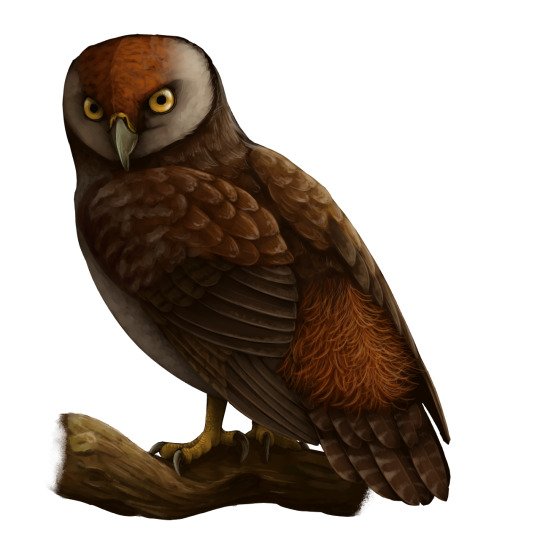
By Scott Reid
Ecosystem: The Messel Pit was a diverse and important ecosystem from the middle Eocene, with many different transitional forms of animals to showcase how life began to evolve into modern forms. Palaeoglaux is one of many transitional dinosaurs, living in the Global Rainforest environment of the time; the Messel Pit was warm and wet and covered with dense vegetation, which rendered Palaeoglaux and essentially all other tree-dwelling birds extremely small. The forest surrounded a large lake, which was filled with trapped volcanic gas; these gases would have released periodically and overwhelmed the animals of the environment, leading ot mass deaths. These animals would have then drifted down to the bottom of the lake, allowing for the unique preservation that allows for us to have a unique glimpse into this environment. Palaeoglaux probably spent most of its time in the trees, rather than closer to the lakeshore.
Many other dinosaurs filled the environment with Palaeoglaux, including the early roller Eocoracias, the early songbird Primozygodactlyus, other roller and Kingfisher relatives Messelirrisor and Primobucco, the parrot of prey Messelastur, the seriema-like Strigogyps, and the large herbivore Gastornis. Messelastur and Strigogyps, being much, much larger than Palaeoglaux, may have even fed upon it. The early flamingo relative Juncitarsus was also present in the pit, and probably was a wading bird within the lake of the Messel. Early forms of hummingbirds and other weird fliers were present (such as early relatives of potoos and nightjars), as well as an early woodpecker relative Gracilitarsus, other seriema relatives like Idiornis, and falcons like Masillaraptor. As such, diurnal birds of prey were heavily present in the Messel; and this points more to Palaeoglaux potentially being nocturnal after all.
Palaeoglaux was also present in the Quercy Fissure Formation. This was a later Eocene formation, showcasing how life began to transition along with the general environment. The global rainforest was drying up as the world was cooling; ice caps were forming at the poles, and ecosystems in general were becoming more open, dry plains. As such, Palaeoglaux got somewhat larger - as did other birds. Still, the Quercy Formation represents an environment that was still fairly warm and wet - it was probably an estuary environment, near to the shore but not quite associated fully, given that very few fish are preserved there. The environment was littered sinkholes and caves, leading to its unique preservation of animals. Many salamanders and some frogs are known form the area; though, by far, lizards are some of the most common animals there, and were probably a major source of food for Palaeoglaux. Here, Strigogyps was still present, and may have still been a problem for Palaeoglaux; parrots closer to modern forms such as Quercypsitta were present, as was the early woodpecker relative Sylphornis. Pigeons, water birds, and landfowl were also common frequenters of this environment.
Other: Palaeoglaux, though complete, is often extremely crushed; the fossil slabs of the species are difficult to interpret, and one of the best known slabs has not yet been fully described.
Species Differences: P. perrierensis is the later species from Quercy - so it is younger, from France, and larger than P. artophoron, the species from the Messel. In addition, P. perrierensis did have somewhat stronger feet than P. artophoron, indicating further evolution of traits involved in catching prey as the genus continued through the Eocene.
~ By Meig Dickson
Sources under the cut
Astruc, J. G., G. Escarguel, B. Marandat, R. Simon-Coinçon, B. Sigé. 2000. Floor-age constraining of a tectonic paroxysm of the Pyrenean orogen. Late Middle Eocene mammal age of a faulted karstic filling of the Quercy phosphorites, south-western France. Geodinamica Acta 13: 271 - 280.
Mayr, G. 2009. Paleogene Fossil Birds. Springer-Verlag Berlin Heidelberg.
Mayr, G. 2017. Avian Evolution: The Fossil Record of Birds and its Paleobiological Significance. Topics in Paleobiology, Wiley Blackwell. West Sussex.
Mayr, G. 2016. The early Eocene birds of the Messel fossil site: a 48 million-year-old bird community adds a temporal perspective to the evolution of tropical avifaunas. Biological Reviews 92 (2): 1174 - 1188.
Mezger, J. E., M. Felder, F.-J. Harms. 2013. Crystalline rocks in the maar deposits of Messel: key to understanding the geometries of the Messel Fault Zone and didatreme and the post-eruptional development of the basin fill. Journal of the German Geosciences Society 164 (4): 639 - 662.
Mourer-Chauviré, C. 1987. The owls (Aves: strigiformes) of Phosphorites Du Quercy (France) systematics, biostratigraphy, and paleobiogeogrpahy, pgs 89 - 136 in Documents des Laboratoires de Geologie Lyon, Départment des Sciences de la Terre, Université Claude-Bernard Lyon 1.
Peters, D. S. 1992. A new species of owl (Aves: Strigiformes) from the Middle Eocene Messel Oil Shale. Campbell, K. ed. Papers in Avian Paleontology honoring Pierce Brodkorb. Science Series Natural History Museum of Los Angeles County 36: 161 - 169.
Rage, J.-C. 2006. The Lower Vertebrates from the Eocene and Oligocene of the Phosphorites du Quercy (France): An Overview. Strata 1 (13): 161 - 173.
#palaeoglaux#bird#dinosaur#owl#paleogene#carnivore#eurasia#theropod thursday#birds#dinosaurs#afroart#factfile#birblr#palaeoblr#palaeoglaux perrierensis#palaeoglaux artophoron#paleontology#prehistory#prehistoric life#biology#a dinosaur a day#a-dinosaur-a-day#dinosaur of the day#dinosaur-of-the-day#science#nature
177 notes
·
View notes